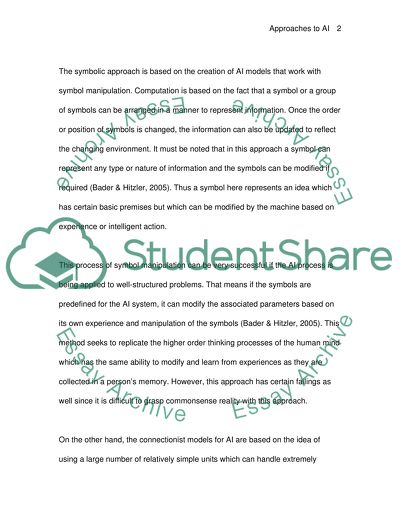Are connectionist models and symbolic models competing or Essay. Retrieved from https://studentshare.org/miscellaneous/1536678-are-connectionist-models-and-symbolic-models-competing-or-complementary-appraoaches-to-artificial-intelligence
Are Connectionist Models and Symbolic Models Competing or Essay. https://studentshare.org/miscellaneous/1536678-are-connectionist-models-and-symbolic-models-competing-or-complementary-appraoaches-to-artificial-intelligence.


